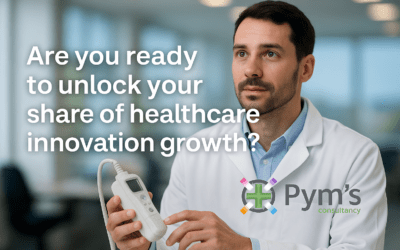With so many diverse software solutions for patient care and data collection in the NHS, we are constantly looking for efficient and integrated data management systems. Part of my role is to research and keep up to date with advancements, so this is an area where I have been digging recently. With NHS waiting lists and finances at their worst in living memory, data management and integration has never been more critical. Today, I want to discuss a potential solution that is promising to revolutionise healthcare IT: openEHR. This technology represents not just a technical update but a significant shift in how healthcare data is handled, shared, and utilised across care settings. Bearing in mind that Big Data has an intrinsic value and risk for Data Controllers, what is openEHR?
Understanding openEHR
At its core, openEHR (pronounced “open-air”) is an open-standard technology framework designed to manage electronic health records dynamically and comprehensively. It offers a structured way to store health data so that it is consistent, reliable, and accessible across various systems and settings. No more turning up for an appointment and having to explain to a clinician about clinics attended for other disciplines, and being told results aren’t available.
The essence of openEHR lies in its approach to managing healthcare data. Unlike traditional systems where data is tightly coupled with specific applications, openEHR separates data from applications. This means that data is stored in a universally understandable format, independent of any software that creates, stores, or processes it. This separation ensures that healthcare data can outlive the applications they initially interact with, a crucial feature in a sector where legacy systems often act as barriers to innovation (something I have been known to moan about!).
Why is this shift significant?
To those of you who do not work in or with the NHS, you may be surprised to know that in each medical discipline there can be multiple software applications for any one discipline, which won’t necessarily “talk” to each other and share data, then when you have a condition like diabetes where you attend multiple different clinics, this issue of unshared data between systems becomes multiplied. What does that mean for the patient? Attending multiple clinics (which if you are a patient with a diabetic foot ulcer, and non-weight-bearing is exceedingly challenging), at each clinic having to explain what other clinics you have attended, and what tests were conducted, test results often not being available on the file, to having to repeat tests “just to be sure”.
For decades, the NHS and other healthcare systems have struggled with interoperable systems — the ability for different IT systems and software applications to communicate, exchange data, and use the information that has been exchanged. New software introduced to NHS departments has to form a costly queue for NHS IT to create required APIs, and then test functionality. Interoperability issues in healthcare IT are not just inconvenient; they can hinder timely access to patient data, impeding clinical decision-making and ultimately affecting patient care quality.
openEHR addresses these challenges head-on by providing a standardised way to describe, store, and manage data across all forms of care. By adopting a model-driven architecture, openEHR facilitates the creation of a flexible and sustainable ecosystem of applications that can operate over a common data layer.
Again, for those who do not work in technology, this means that you can attend a clinic, and all the tests and results from another clinic will be available, along with those notes. So, blood tests, scans, X-rays, etc., do not need to be repeated just because you are now in an Orthopaedic Clinic and previously attended a Renal Clinic (for example).
The opportunity for the NHS
The potential benefits of openEHR for the NHS are significant:
- Enhanced clinical outcomes: with better data availability and quality, clinicians can make more informed decisions, leading to improved patient outcomes and giving every clinician the opportunity to treat their patients holistically instead of treating a single disorder in isolation.
- Cost efficiency: enhancing system interoperability cuts down on unnecessary expenditures tied to maintaining old that may have been superseded by other technology – just because they hold data that needs to be retained. Current systems lead to duplication of tests, questions and repeating patient histories when we are encouraged to support patients to “tell their story once”.
- Innovation and research: a unified data structure improves the quality and accessibility of data for research, paving the way for advancements in treatment and understanding of diseases.
The challenge of adoption
However, the shift to openEHR isn’t just a technological upgrade — it’s a cultural one. The most significant hurdle isn’t the software itself but securing buy-in at all levels, from NHS trust boards to the clinical staff on the ground. As much as NHS staff are used to frequent introduction of new technology, there is often resistance to “adding another thing” to an already pressured workload.. Successful implementation of openEHR or any transformative health IT system hinges on demonstrable benefits to patient outcomes and the user-friendliness of the system.
Historically, NHS England has faced challenges in software procurement and implementing change effectively. For openEHR to be different, its deployment must not only show that it can enhance clinical pathways but also that it is straightforward and beneficial for the staff using it. Adoption needs to be underpinned by effective training, clear demonstration of benefits, and seamless integration into existing workflows to minimise disruption and resistance.
Conclusion
As we view the beginnings of what could be a significant transformation in how health data is managed in the NHS, the focus must not solely be on the capabilities of the technology but also on the strategy of implementation. The software might be revolutionary, but without comprehensive adoption strategies that address both board-level and staff-level concerns, even the best systems risk underutilisation, being used as a data entry point and retrieval, and not benefiting from the wider opportunities that this ‘Big Data’ offers to individual patients and the population as a whole.
The future of a more integrated, efficient NHS powered by openEHR is promising but requires careful, strategic handling to ensure that this powerful technology fulfils its potential without becoming another footnote in the annals of healthcare IT challenges (or a column in the Daily Mail).
If you’d like to know more or discuss any of the issues raised above, please don’t hesitate to contact us.



